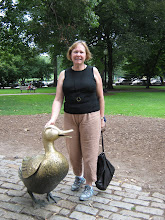The United Nations declared 2025 as the International Year of Glaciers' Preservation, accompanied by the proclamation of the 21st March of each year as the World Day for Glaciers starting in 2025. This is an opportunity to raise global awareness about the critical role of glaciers, snow and ice in the climate system and the hydrological cycle, and the economic, social and environmental impacts of the impending changes in the Earth’s cryosphere.
We do not have any active glaciers in Australia, but plenty of evidence that there once were glaciers here. Many other places are at risk of losing theirs, so this is the year to focus on them and their role in the world environment.
Look for these books in your library to learn more about glaciers.
Glaciers have been around for a long time. Many formed at the end of the
last ice age, about 20,000 years ago. Since then, they have shaped Earth's landscape, helped cool the planet, and provided living things with fresh water--all while weathering changes in Earth's climate. Studying glaciers can tell us a lot about how Earth's climate has shifted over time, how human activities are impacting the climate, and what might occur in the future. Packed with information, vibrant photos, and hands-on activities, this book helps students learn about glaciers, how they're changing, and what that might mean for the planet's future.
Meltdown by Anita Sanchez and Lily Padula
This is a kids' guide to the glorious but endangered world of glaciers. Glaciers may not be as well-known as rain forests or coral reefs, but they are just as vital to the health of the planet, and just as threatened by climate change. Packed with information, grounded in the latest science, with lively writing and illustrations throughout (including graphs, charts, infographics, photographs, and full-page art), Meltdown gives readers an eye-opening overview of glaciers and how important they are: There are over 100,000 glaciers covering 10% of earth s landmass, that hold almost three-quarters of the planet's fresh water, and act as protective shields to cool the atmosphere and combat climate change. Icebergs and Glaciers by Seymour Simon
An in-depth look at how icebergs and glaciers have shaped our rivers, mountains, and earth, as well as the effect climate change is having on them and our planet.
Glaciers are Alive by Debbie S. Miller and Jon Von Zyle
This environmental picture book introduces young science and nature lovers to the wonders of glaciers, the wildlife that call them home, and how important they are to the health of our planet. A glacier may look forbidding and empty, but it supports abundant life. Follow a glacier as it flows from mountain to ocean, providing a home for ice worms, birds, bears, and more.
Are Glaciers the Key to Climate Change? by Olivia Watson and Daniel Limon
Glaciers are incredible, as are the glaciologists who study them! As these giant ice sheets melt rapidly, their study could be vital to understanding our changing planet. Discover how ice preserves ancient plants and animals, how glaciers change the shape of the Earth, the surprising things they reveal about our planet’s past, present, and future climate, and much more!
How Glaciers Shaped Earth by Jane P. Gardner
Readers will learn about the features of glaciers, how they have shaped Earth's surface in the past, and how they could change Earth in the future. Vibrant, full-colour photos and carefully leveled text will engage young readers as they learn more about glaciers and their impact on our planet.
Readers will learn about the features of glaciers, how they have shaped Earth's surface in the past, and how they could change Earth in the future. Vibrant, full-colour photos and carefully leveled text will engage young readers as they learn more about glaciers and their impact on our planet.
Glacier on the Move by Elizabeth Rusch and Alice Brereton
Tells the story of a glacier named Flo and her slow-motion race to the sea, from the edge of an ice field and down steep cliffs, to muscling her way around mountains, and stretching into a valley. With the help of some iceworms in the margins, Flo reveals how glaciers move, change shape, and provide for the surrounding world and animals. It introduces young readers to glacial history and science in a captivating and unique way.
Angela's Glacier by Jordan Scott and Diana Sudyka
As soon as she's born, Angela's father introduces her to her glacier. He carries her on his back up the icy expanse as the wind makes music of the snow and the water underneath. Over time, Angela gets big enough to walk beside him, and then, to go alone. She tells her glacier everything, and it answers.
An afterword from the real Angela highlights the tragic threat climate change poses to our planet's frozen marvels.
An afterword from the real Angela highlights the tragic threat climate change poses to our planet's frozen marvels.
The Bear Report by Thyra Heder
A polar bear named Olafur swoops Sophie away to the Arctic, where she soon learns all about the playful bear's habits and habitat - from glacier mice to the northern lights - and, despite her first reservations, she finds herself not just interested but excited about the Arctic. When the two are swept out to sea on an iceberg, Sophie's new knowledge and knack for creative thinking pay off in a big way: she calls a whale to their aid!











No comments:
Post a Comment